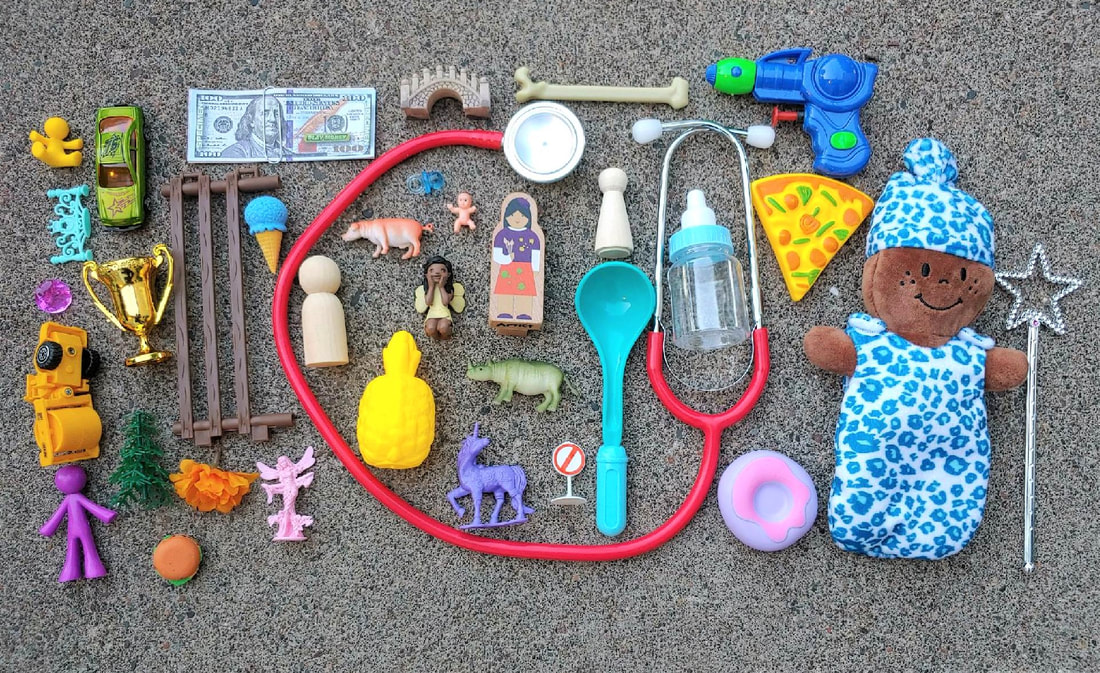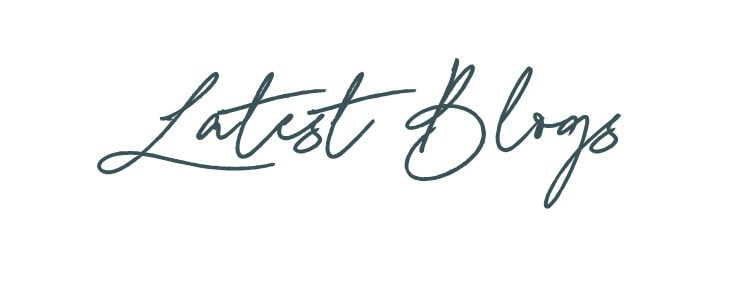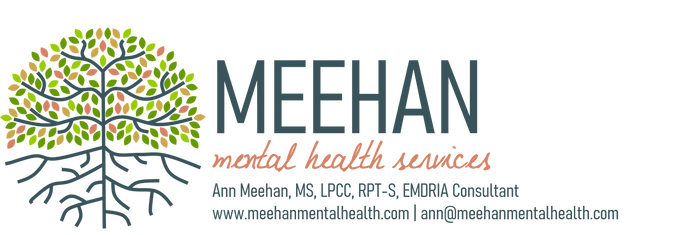|
The challenge: fit an entire play room into a small kit and make it cost effective enough where you can afford to create multiple different kits. This has been on my mind since the start of summer, where I ebbed and flowed between safety, in office vs. virtual, and having the right tools to effectively do my job. Here is a peek at a fraction of how I am coming along with this challenge and what I am incluidng in these kits! As I am assembling these kits I am LOVING opening the package and so far, everything fits *fingers crossed*. So why play therapy kits? I talked HERE about children’s imagination and creativity in toy selection, BUT I was starting to wonder that for kids that are doing Tele-Play 100% of their sessions, if there was something unique, special, and magical about toys specifically selected by a play therapist. Toys that are unfamiliar and toys that they do not have any history with. Now, the families that I work with have been absolute CHAMPIONS for selecting toys by Garry Landreth from this list available HERE from the University of North Texas. However, over time the toys have begun to get a bit scattered or sometimes there are important figures or object the child just didn’t have. I’m going to be really honest. When everything shut down, I transitioned my toys and materials home, set up my garage office, and began to prepare my clients for all virtual sessions. I thought “yea, I can do this for three or for weeks”. HA. HAHAHAH. Thank goodness that was my thinking because I think if I understood what was to come the overwhelm would have left me paralyzed. I now look at this thinking as a humorous gift. I also want to emphasize that there is no one right way when you are thinking about continuing your work as a therapist who serves children. For me, the best thing that I can do for my clients is to continue virtual for the foreseeable future. I do not have any outdoor space at my office (6th floor!) AND with being a Minnesotan – winter is coming. I have also pondered the experience of play therapy with distance and a mask and am unsure if I will stay regulated enough if a client has told me about a large gathering they attended or being back in a classroom to be attuned and regulated as they need me to be. And as for me, ethically I have pondered that if I come into contact with someone who is being tested (which has happened for me or someone coming through our office, and inevitably will keep happening) do I then transition to virtual sessions until the results come back? What will that transition be like for my clients? And others…well other therapists out there are mandated by agencies or schools to be back in person OR they have made the choice that in person is what is best for the treatment of their clients. With this option comes the cleaning, sanitizing, outdoor sessions, masks (and the hunt for the perfect mask that is clear and doesn’t fog!) and other safety measures like researching UV light sanitizing. Ugh. Enter the Play Therapy Kit. As I have started the process of building play therapy kits, my intention is to send them out to some of my clients who need more or who have struggled with play with the toys they have in their own collections. Also when taking on new clients I want the transition to play therapy to be seamless so some of the kits will go to new young people on my caseload. I have been sharing some of my projects for the transition around the blog with my nearly free (with free printable) compact play kitchen HERE and low cost options for sand trays for sand tray kits HERE! I actually think play therapy kits are an awesome solution for both virtual and in office! The goal for the Play Therapy Kit is to have a comprehensive “play room” in a very small and portable kit so you can either send them to families OR have them in your office for children to use. In office (or if you are between multiple offices or schools) you would either assign a child to a specific kit and have that child be the only one to play with that kit (I'm going to number mine) OR have only one kit used per client per day and sanitize them all at the end of the day. For example if you had 5 play therapy clients scheduled for the day then each would select a different kit (all with identical items) and then that kit would be put aside to be sanitized at the end of the day. Play Therapy Kit Pros: The biggest pro for me (with sending kits to kids) has been making sure they have a comprehensive set of toys to access for our sessions. Some of the most impactful and meaningful work virtually has come when I had children create and play with modified sand trays, like I talk about HERE. These kits would help young people do Sand Tray work, if needed, AND open up the world to things that they may not have available at home. I also have wondered if play therapy is different with toys they have never seen before and have no prior emotional connection to. I also felt like for virtual play, these kits offered significantly more containment ability (snapping lids). Lots of my families stored sand trays open, toys in tote bags, etc. and the ending of the play therapy session just didn’t quite feel like the process of in office. And by “containment ability” I was definitely more interested in visual and emotional containment rather than the actually cleaning up of toys for practical reasons, but for both it is a big pro! Another pro with the kits (for in office) is that it lessens the burden on cleaning between clients. For me when I was in office before things shut down, I cleaned and sanitized between sessions. Even thought I had a designated “used toy” tote to place items rather than back on the shelf, I felt that practice was limiting. I had young people who would dig through my miniatures (of course I couldn’t track the exact things they touched) and then I would have to sanitize ALL the contents of several bins. *face palm* Inevitably they would forget the rules and put things back on shelves, and I found myself constantly reminding or limit setting. This seemed restrictive to the permissiveness play therapy is supposed to offer. It also left a really strong odor of cleaning supplies in between sessions. I also found when we only took out several objects at a time it felt restricting to the permissiveness of play therapy as well. With kits the limits seem significantly clearer – we can play with anything we want to in your play therapy kit! AND since the kits are comprehensive it doesn’t feel like they are limited to the types of things that they may play. Another pro is that these kits are small enough where they can be easily stored by parents in home and don’t take a significant amount of muscle to take out, carry, or transport. If you are going between offices these would fit nice in a tote bag or a rolling suitcase. If you are transporting between office be sure to Zip Lock Bag your sand…trust me on this one. Play Therapy Kit Cons: The first con is that to get a comprehensive kit they can be spendy, even when you are cutting costs and creating the most cost effective kits possible. After all the dust settled I was around $60 - $70 per kit, which is a small tiny fraction of what it takes to create a standard play room. However, with 8 kits that I have created (with this round) it was a pretty big chunk of change. AND anticipating they would be used at least for the next 6 ish months, likely more if you count the transition back to office, it seemed like a solid investment for my practice. You could absolutely decrease the number of kits made and then you would only need to sanitize one time per day or in the middle of the day, rather than between every client. Other cons include the time to create and make these kits. I have spent TONS of hours scoring the internet, at Target, and the Dollar Store, to get ideas, cost compare, and purchase all of the supplies. Within the next weeks I will be sharing my entire source list – SO hopefully it makes it easier for you! However, you still will put a large amount of time in, especially if you are making the play stove kits. So. Many. Circles. Another downfall is storage. A pro for portable and at home, but if they are all stored in your office, these kits will need space and you may need to rearrange your regular toys to make room. You may also need to remove certain toys or all other toys, as to not have to put excessive limits on what can be touched and what can’t. Now, there are some things that won’t fit in the little kits. Think pool noodles (some of my favorites!). When I go back into office I am anticipating developing a small selection of toys (including the pool noodles) that can be touched by any child but are really easy to sanitize between sessions. Meebie might go into this category (with fabric sanitizer of course). However, depending on how these kits roll out, I may do individual pool noodles that sit on the shelves with the toy kits! Lastly, if you are virtual the other con to this is getting the play room from you, to your client. A great option is pick up at the office location (mine is still open with admin for therapist that choose to be in person or do virtual from the office). The second way is shipping the kits, however that can definitely get costly to ship even one play therapy kit. Play Therapy Kits won’t be for everyone – but maybe they will be right for you! Hopefully this introduction to the play therapy kit has got your brain going about whether this would be a good fit for your play therapy practice as we keep playing on in this pandemic! Have you already created kits of your own? Drop a comment or link to your favorite toys that are MUST for inclusion! Let's Connect - click here to join my email list!
1 Comment
Tammy Richards
6/2/2021 08:48:31 am
Are these kits you are creating for sale? I am a counselor-in-training. My goal is to become certified after I obtain my license. I would like to start purchasing items as I move closer to those goals. This is such a great idea!
Reply
Leave a Reply. |
Hi, there!I'm Ann Meehan, an LPCC, Loading... Archives
July 2024
Categories
All
|
Privacy Policies | Terms of Use | Disclaimer
Contact
[email protected] | Copyright Meehan Mental Health Services 2022
Contact
[email protected] | Copyright Meehan Mental Health Services 2022





